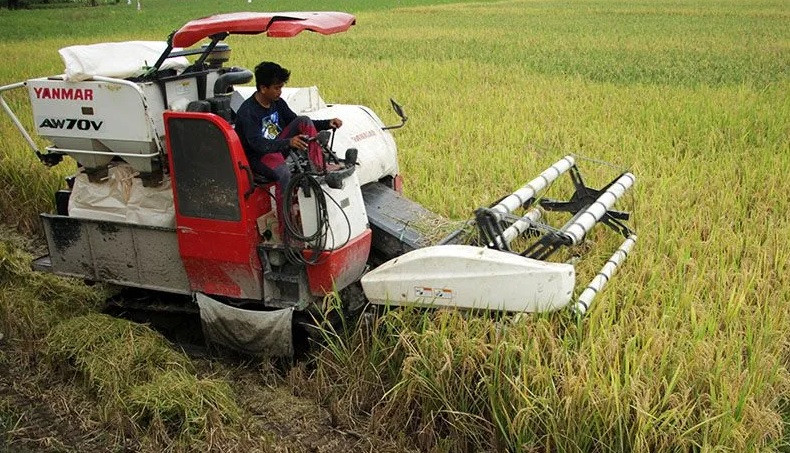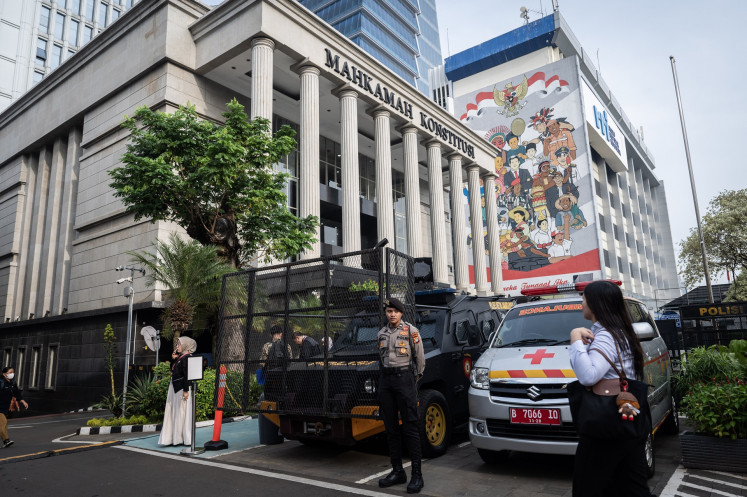Agriculture groups warn of farming land loss
Various agricultural groups have warned the central government that the country is rapidly losing farming land and are calling for immediate action.
Change text size
Gift Premium Articles
to Anyone

V
arious agricultural groups have warned the central government that the country is rapidly losing farming land and are calling for immediate action, following a meeting on the sidelines of agricultural exhibition InaGRO Expo 2022 in Surabaya, East Java, over the weekend.
The meeting, dubbed Rembug Tani (agricultural meeting), heard that at the current rate, Indonesia would only have a total of 3.6 million hectares of farming land by the time the country celebrates its 100th anniversary in 2045.
“[That figure] will be very inadequate to fulfill our food needs,” said Sumrambah, chairman of the East Java Andalan Fishermen and Farmers Community (KTNA) and Jombang deputy regent.
He said that in 2012, the country had a total of 8.4 million ha of farming land; by 2019 this had declined to 7.4 million ha.
Rembug Tani was attended by representatives from the East Java chapters of the Indonesian Chamber of Commerce and Industry (Kadin), Indonesian Farmers Association (HKTI), Indonesian Fishermen Association (HNSI), Indonesian Employers Association (Apindo), the Financial Services Authority (OJK), universities and the media.
The meeting called on the government to immediately decide on sustainable food farming land (LPSB) to protect farming land from conversion by other sectors. Sumrambah said that this included enforcing the Agriculture Law on land usage to reduce the amount of idle land.
“This is to prevent investors from buying large plots of land and then leaving it unused,” he said.
The warning on farming land loss is one of four recommendations the meeting gave to the central government.
The others are stakeholder collaboration in agriculture, agricultural research institutions and data systems problems and the revocation of the fertilizer subsidy.
Adik Dwi Putranto, East Java Kadin chairman, said that research institutions are vital to boosting production quality and quantity.
“This is also related to the pressing issue of food technology implementation to protect Indonesia from a food crisis,” Dwi said.
Warsito, East Java HKTI, deputy chairman, urged the government to provide a harvest subsidy instead of a fertilizer subsidy.
“At the moment, farmers are having difficulty getting fertilizer during planting season. But come harvest time, the government opens imports [that crush local commodity prices],” Warsito.
He said that the government should provide security to farmers by ensuring product sales.
Agriculture is a huge contributor to Indonesia’s economy.
Around 29 percent of the Indonesian workforce works in the agriculture, fisheries and livestock sector, which contributes nearly 13 percent to the country’s GDP. It is the third-biggest contributor to the economy after manufacturing and trade, according to Statistics Indonesia (BPS) data.
Another problem the sector is facing is fewer young people pursuing farming as a profession compared with previous generations. The country lost 5.1 million farmers between 2003 and 2013, with their numbers falling to 26 million, according to the BPS.
Only 23 percent of the country’s 14.2 million people aged between 15 and 24 worked in the agriculture, forestry and fishery sectors in 2019, data from the National Labor Force Survey showed.
This trend is expected to continue, and at this rate, Indonesia will lose all its farmers by 2063. (dre)









